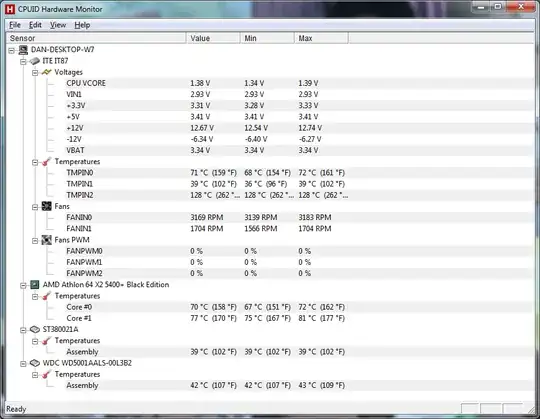For fear that this question is too specific, I'm posing the general question first and including details of my own situation below.
General Question
If I know that my system is overheating (to the extent that it's actually shut itself down a few times), how can I determine what's causing it to overheat? What are the most likely causes/solutions (e.g., CPU heatsink dysfunctional, thermal paste not applied correctly, internal fan damaged, etc.)?
Specific Question
So, I'm pretty certain my CPU is running way too hot. According to HWMonitor, both of my Athlon 64 X2 5400 cores are around 80C. I understand this is way too high.
I THINK the issue may be my heatsink, so I am ready to order another from Newegg. However, I don't want to go ahead with that if there are other likely causes of this overheating. For example, how can I be sure the fans inside my system are working properly?
My motherboard is an ASUS M3A78-EM. When I go into setup when starting my computer, and navigate to the Power section, I see the following under Fan Speeds:
CPU 3000 RPM [approx.] Chassis 1300 RPM [approx.] Power N/A
Should I be concerned about that "N/A" next to "Power"? Do I need another fan?
Also, in HWMonitor, what does the "Fans PWM" section indicate? There are three entries, and they all read 0% across the board. Here's a screenshot, just to make it clear:

Clearly, I am rather helpless here. Where do I start? How can I fix this problem?